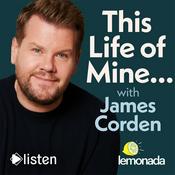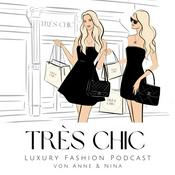28 Episoden

LUDWIG HILBERSEIMER | Ute Poerschke & Kevin Harrington
16.12.2025 | 53 Min.
The last episode of 2025 is here! And it's about Ludwig Hilberseimer. Never heard of him? No problem! bauhaus faces will help you out. Only few of the houses Hilberseimer planned were built. He was much more concerned about the bigger picture: How does the modern city, especially the metropolis, need to be organized to meet people's needs? His futuristic-looking draft of a Highrise City from 1924 with floating bridge pavements high above the streets, skyscrapers as apartment buildings, and a plant-less, sterile surrounding was certainly a real shocker. A "necropolis" rather than a metropolis. That high-rise apartment buildings would soon become reality, only a few of his contemporaries of the 1920s believed. With the help of the architectural historians Ute Poerschke and Kevin Harrington we will shine a light on Ludwig Hilberseimer. 🎧 Listen on bauhausfaces.com or on all major podcast platforms!

HANS FISCHLI | Peter, Gina & Fredi Fischli
25.11.2025 | 47 Min.
In this new episode of bauhaus faces, we dive into the life and work of Hans Fischli. Often overlooked in broader Bauhaus stories, Fischli worked across architecture, painting, sculpture, and teaching—leaving a mark that’s still felt today. To get a sense of his impact, I spoke with the people who knew him best: his son, the artist Peter Fischli, his grandson, curator Fredi Fischli, who is currently preparing an exhibition on Hans Fischli at Zentrum Paul Klee in Berne, and his granddaughter, the artist Gina Fischli. Together, they share personal stories and reflections on their (grand-)father’s architectural and artistic work. 🎧 Listen on bauhausfaces.com or on all major podcast platforms!

LÉNA MEYER-BERGNER | Sandra Neugärtner & Viridiana Zavala
30.9.2025 | 57 Min.
She was more than a textile designer— Léna Meyer-Bergner was a force for education and for social change. While her husband, Hannes Meyer, is often remembered as the Bauhaus’ second director, Lena’s groundbreaking work in design, pedagogy, and social transformation is finally stepping into the spotlight. In this episode, I sat down with two leading art historians – Sandra Neugärtner and Viridiana Zavala – to explore the unknown story of Léna Meyer-Bergner. From her studies at the Bauhaus to her visionary approach to modernism in the Soviet Union and on to her graphic talent in exile in Mexico, we explore how her work evolved. 🎧 Listen now and discover why Léna Meyer-Bergner deserves a place at the center of Bauhaus history.

LÉNA MEYER-BERGNER (BONUS) | Viridiana Zavala
29.9.2025 | 59 Min.
Léna Meyer-Bergner fue más que una diseñadora textil: Léna Meyer-Bergner fue una fuerza impulsora de la educación y el cambio social. Aunque su esposo, Hannes Meyer, segundo director de la Bauhaus, es muy conocido, el trabajo pionero de Lena en el diseño, la pedagogía y la transformación social está finalmente saliendo a la luz. En este episodio, me senté con la historiadora de arte mexicana Viridiana Zavala para explorar la desconocida historia de Léna Meyer-Bergner: desde sus estudios en la Bauhaus hasta su enfoque visionario del modernismo en la Unión Soviética y su talento gráfico en el exilio en México, exploramos cómo evolucionó su obra. 🎧 Escucha ahora y descubre por qué Léna Meyer-Bergner merece un lugar en el centro de la historia de la Bauhaus.

MAX BILL | Angela Thomas, Erich Schmid & Martin Mäntele
02.9.2025 | 1 Std. 14 Min.
"Bill always said that he also went to the Bauhaus to find clarity. And that is a process. You don't just have clarity, you have to earn it." (Angela Thomas) For this brand-new episode, I travelled to Zumikon to visit Angela Thomas and Erich Schmid in their house - the Bill Haus. This house, which looks somehow unremarkable from the outside but is amazingly light, open, and welcoming and on the inside, was built by the Swiss architect and designer Max Bill in 1967–68. His second wife and widow, Angela Thomas, lives there today with her husband, the filmmaker Erich Schmid, who made a film about Bill entitled “Max Bill – Das absolute Augenmaß/The master's vision”. Max Bill established himself in art history as the architect and first director of the Hochschule für Gestaltung in Ulm, also known as HfG Ulm or Ulm School of Design. And that is exactly the reason why I also interviewed the head of the HfG Ulm archive, Martin Mäntele, regarding all questions around the official successor of the Bauhaus. Because that is what Bill intended to do in Ulm – to continue the Bauhaus as if it had never been closed in 1933. And he had Walter Gropius’s blessing, too, and the financial support by the Americans. LOOK OUT FOR 2 BONUS EPISODES with the original Interviews that will be published in the next 2 weeks!
Weitere Kunst Podcasts
Trending Kunst Podcasts
Über bauhaus faces
Höre bauhaus faces, Harry Potter (Hörbuch) und viele andere Podcasts aus aller Welt mit der radio.de-App

Hol dir die kostenlose radio.de App
- Sender und Podcasts favorisieren
- Streamen via Wifi oder Bluetooth
- Unterstützt Carplay & Android Auto
- viele weitere App Funktionen
Hol dir die kostenlose radio.de App
- Sender und Podcasts favorisieren
- Streamen via Wifi oder Bluetooth
- Unterstützt Carplay & Android Auto
- viele weitere App Funktionen


bauhaus faces
App laden,
loshören.





































